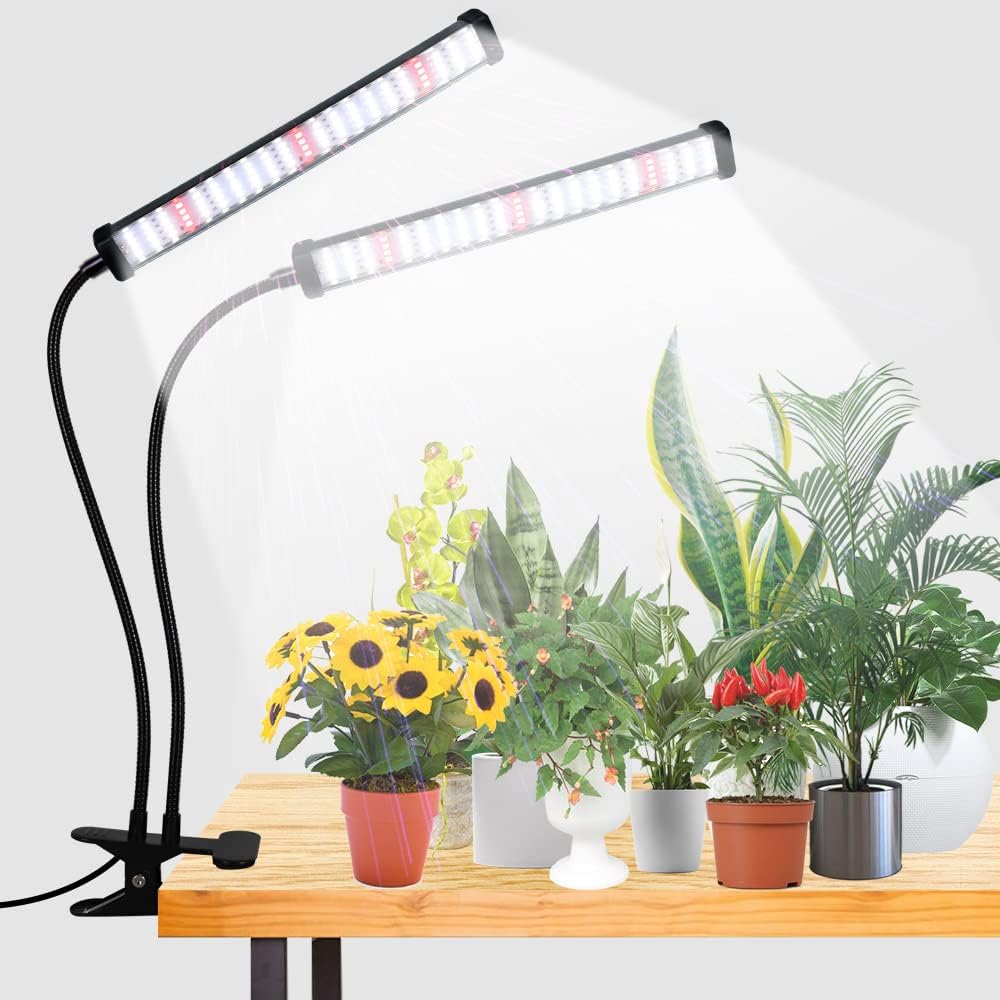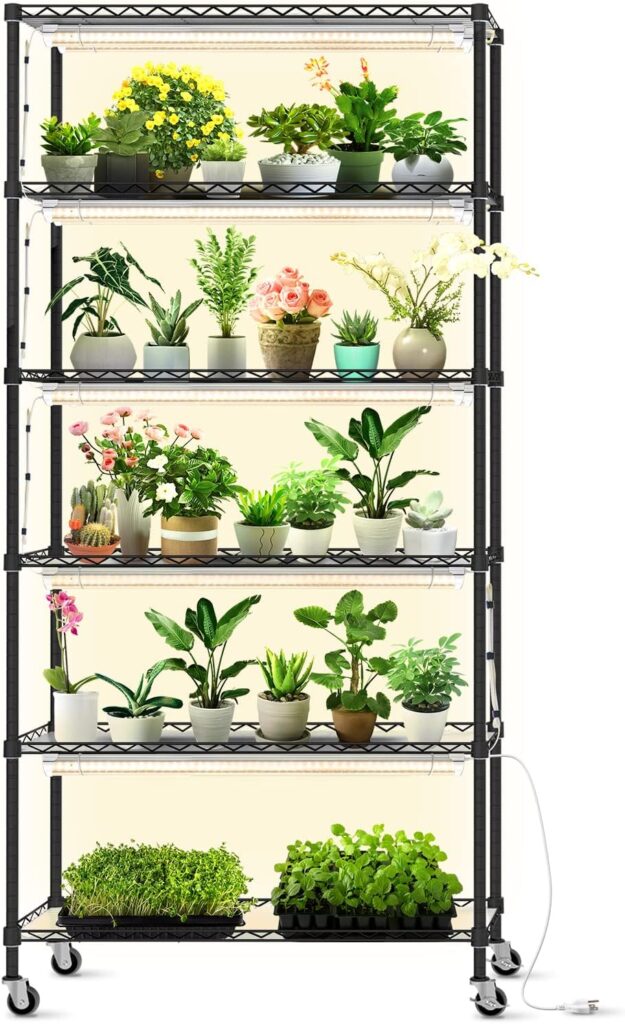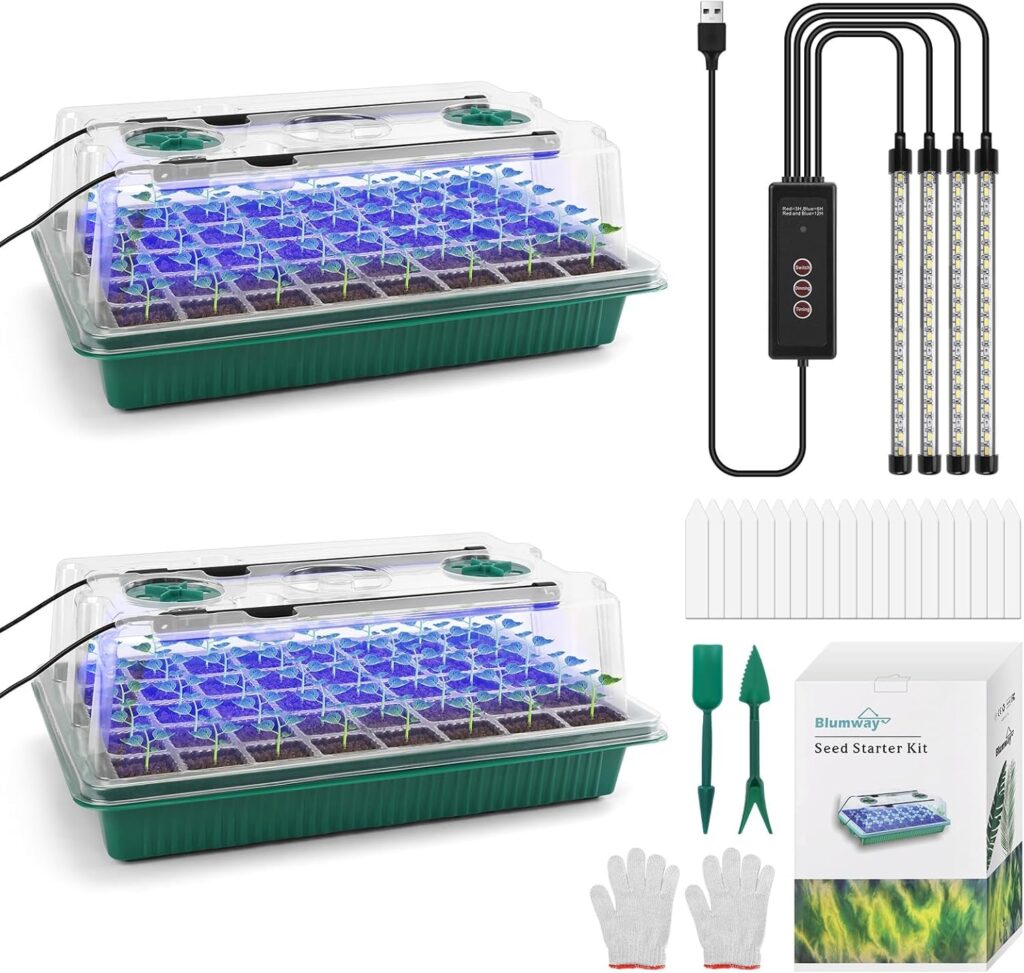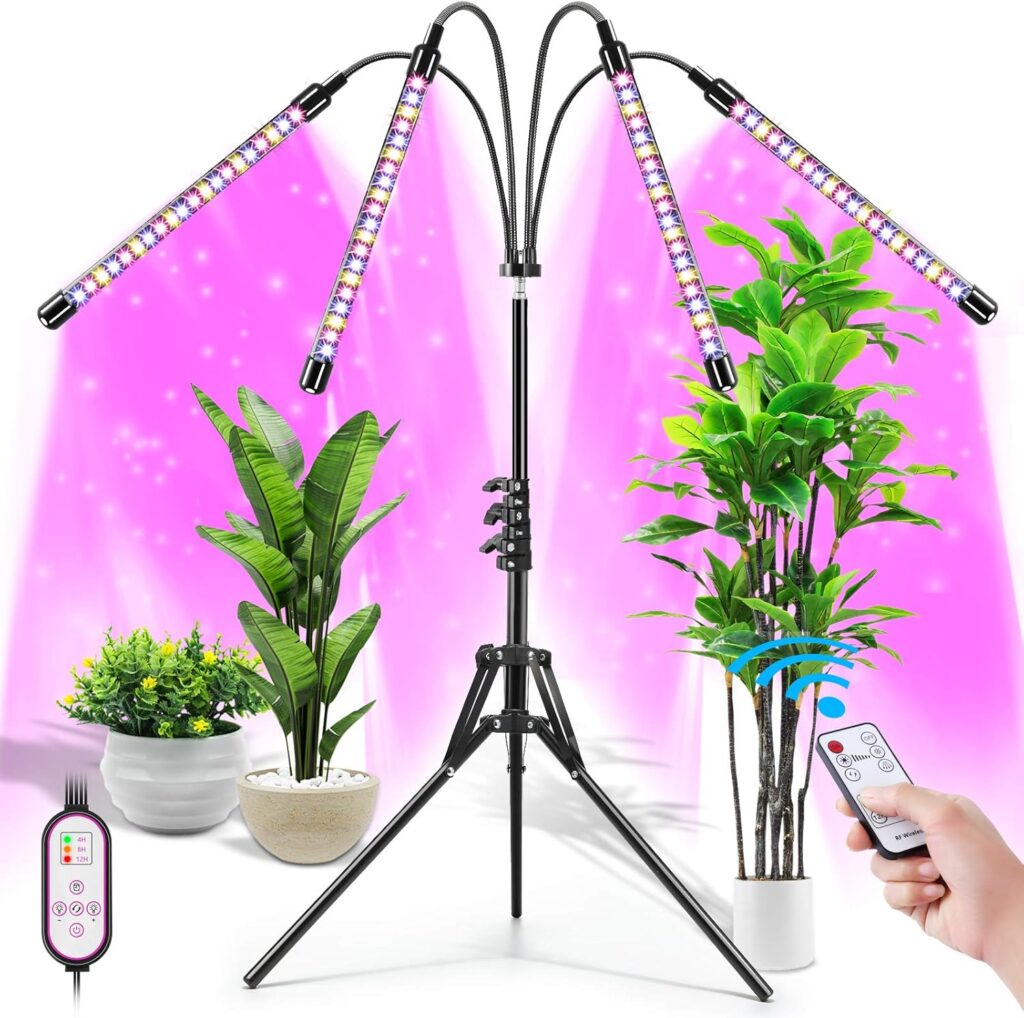Starting your own indoor garden can be a rewarding experience, especially when it comes to seed starting. However, to ensure your seedlings thrive, investing in a quality GROW LIGHT is essential. I can’t tell you how many times my seeds have started off doing great only to die-off because they didn’t have sufficient light, the light got too hot or they outgrew the starter container and it was still too cold out to transfer them to the garden! If you’re considering any variety of grow light, this is an article you may find immensely helpful. Here’s a guide to help you make an informed purchase.
*I may earn a commission at no additional cost to you. I only add products I believe in.

Why Use a Grow Light?
Indoor planting can be challenging due to limited natural light. A grow light simulates sunlight, providing the necessary spectrum for photosynthesis, which is crucial for seedling growth.
Using adjustable LED lights for growing plants indoors offers several advantages over traditional grow lights, such as incandescent or fluorescent bulbs. I personally prefer LED. Here are some key benefits of LED grow lights and key features to look for:
1. Adjustability: The height-adjustable feature allows you to position it perfectly as your plants grow. This ensures that the light is always within the optimal range, maximizing light exposure while preventing burn.
2. Energy Efficiency: LED lights consume significantly less electricity compared to traditional bulbs. They convert a higher percentage of energy into usable light for plants, leading to lower energy bills.
3. Longer Lifespan: LEDs have a longer operational life, often lasting up to 50,000 hours or more. This reduces the frequency of replacements and associated costs over time.
4. Full Spectrum Light: Many LED grow lights provide a full spectrum of light, which means they can emit wavelengths that are beneficial for all stages of plant growth, from seedling to flowering. This versatility is often lacking in traditional grow lights.
5. Lower Heat Output: LEDs generate much less heat than traditional grow lights, which reduces the risk of overheating plants and eliminates the need for additional cooling equipment. This also allows for closer placement of lights to plants without causing damage.
6. Targeted Light Spectrum: LEDs can be designed to emit specific wavelengths of light that plants use most effectively for photosynthesis. This targeted approach can enhance plant growth and yield.
7. Environmentally Friendly: LED lights are more sustainable, as they contain no harmful substances like mercury, which is found in some traditional bulbs. Additionally, their energy efficiency contributes to a lower carbon footprint.
8. Adjustable Light Intensity: Many LED grow lights come with dimming features, allowing growers to adjust the light intensity based on the needs of the plants at different growth stages.
9. Compact Design: LED grow lights are often smaller and lighter than traditional fixtures, making them easier to install and position in various growing environments.
10. Less Frequent Replacement: Due to their durability and longevity, LED lights require less frequent replacement, which can save time and money in the long run.
Overall, the benefits of using LED grow lights make them an increasingly popular choice for both amateur and professional indoor gardeners, contributing to healthier plants and more efficient growing practices.
Here are some of our favorites! Click the pic to get more info.
*I may earn a commission at no additional cost to you. I only add products I believe in.




Purchasing your first grow light can significantly enhance your indoor gardening experience. By choosing a grow light that meets your needs, you’ll set the foundation for a successful seed starting journey indoors. Happy gardening!